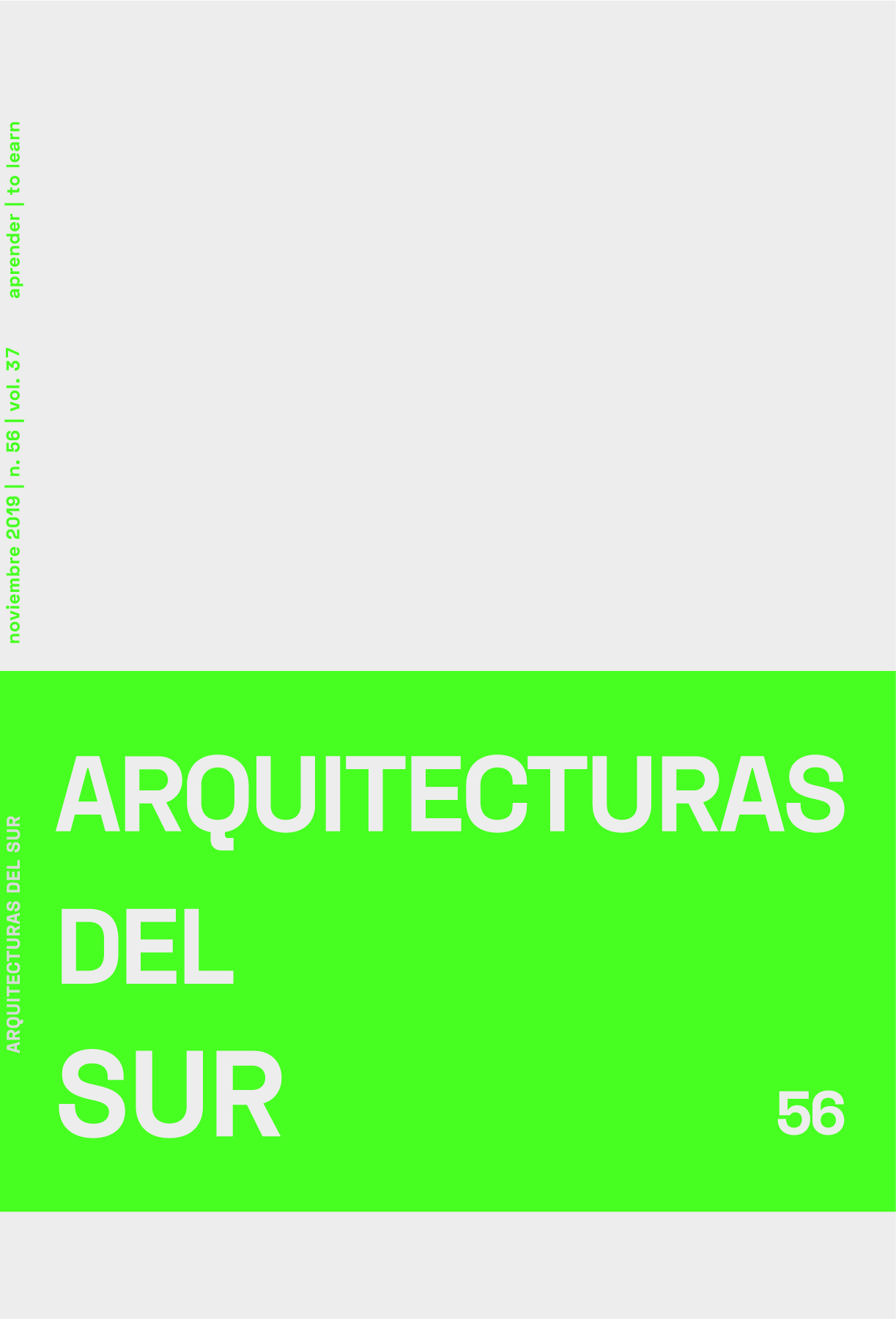50 years training high-quality professionals: The plans of study at the School of Architecture, University of the Bío-Bío (1969-2014)
DOI:
https://doi.org/10.22320/07196466.2019.37.056.01Keywords:
Professional education, architecture, plans of study, programs, Bío-BíoAbstract
This article presents the evolution of the Architecture degree program at the University of the Bío-Bío (UBB) from its creation to the present, through the eight plans of study that have marked the training of the different cohorts that have graduated from this school. The methodology involved the exploration of the existing documentation in archives, from the founding ideology up until today. The agreements that defined the graduate profile and that identify the architects trained at UBB, and the creation of the plans of study and the curriculum diagrams were also examined. The career paths of some of the teachers who brought to life these teaching processes in the classroom were analyzed in accordance with the national and local events of that time. Precisely when this school celebrates 50 years of training professional architects of great national prestige, this tour of its pedagogical models reaffirms its well-deserved third place ranking in architectural degrees in the country and revalidates its international accreditation by the Royal Institute of British Architects (RIBA) since 1991.
Downloads
References
(1989). Segundas Jornadas de estudio crítico en torno a la enseñanza de la Arquitectura. Concepción: Dirección de Escuela de Arquitectura, Universidad del Bío-Bío.
Beneitone, P., Esquetini, C., González, J., Marty Maletá, M., Siufi, G., Wagenaar, R. (2007). Reflexiones y Perspectivas de la Educación Superior en América Latina Informe final- Proyecto Tuning- América Latina 2004-2007. Bilbao: Universidad de Deusto.
Aptecar González, B. (1984). Breve reseña sobre la Escuela de Arquitectura. Concepción: Dirección de Escuela de Arquitectura, Universidad del Bío-Bío. Comisión Nacional de Acreditación (2015). Glosario de términos complementarios criterios de acreditación de pregrado. Recuperado de https://www.cnachile.cl/Documentos%20de%20Paginas/Glosario%20Pregrado.pdf
Decreto N° 1221. Santiago, 10 de julio de 1969.
Goycoolea Infante, R. (2017). Escuela de Arquitectura. UBB desde la memoria. Concepción: Ediciones Universidad del Bío-Bío.
Goycoolea Infante, R. y Lobos Lápera, V. (1976). Reglamento de Créditos Facultativos. Concepción: UTE.
Lobos Lápera, V. (s/f). Memoria Explicativa del Plan de estudios de Arquitectura. Concepción: Documento interno de la Escuela de Arquitectura, Universidad Técnica del Estado.
Meissner, E. (1984). La configuración espacial sobre estructuras configuradoras y espacios configurados. Concepción: Universidad del Bío-Bío.
Maissner, E. (2003). Teoría del signo en Arquitectura (Charlas de Nottingham). Concepción: Universidad de Concepción.
Muñoz, M. D. (c. 1985). Premios Nacionales de Arquitectura, 1969-1985. Concepción: Facultad de Arquitectura y Construcción, Universidad del Bío-Bío.
Shapira, A. (Ed.) (1969). Nueva escuela de arquitectura: Concepción, AUCA (16), 4.
Valassina Simonetta, F. (1987). Definición de los Módulos Básico, Medio y Avanzado y la Licenciatura del programa de Arquitectura (18 de noviembre). Concepción: Facultad de Arquitectura y Construcción, Universidad del Bío-Bío.
Vélez González, S. (coord.) (2013). Educación Superior en América Latina: Reflexiones y Perspectivas en Arquitectura (2013). Bilbao: Universidad de Deusto.
Downloads
Published
How to Cite
Issue
Section
License
The content of the articles published in each issue of Arquitecturas del Sur is the sole responsibility of the authors and does not necessarily represent the opinion of University of the Bío-Bío.
The authors will maintain their copyright; however, they will guarantee the journal the right to first publication and dissemination of their work. The publication of the article in Arquitecturas del Sur will be subject to the Creative Commons International license (CC BY-SA) that allows others to adapt: remix, transform and build on the material for any purpose, even commercially; share: copy and redistribute the material in any medium or format, as long as the authorship and first publication in this journal are acknowledged by citing them correctly, and their new contributions are under a license with the same terms.














 Programa de Información Científica/Concurso Fondos de Publicación de Revistas Científicas 2018/ Proyecto Mejoramiento de Visibilidad de Revistas UBB (Código:FP180007)
Programa de Información Científica/Concurso Fondos de Publicación de Revistas Científicas 2018/ Proyecto Mejoramiento de Visibilidad de Revistas UBB (Código:FP180007) 
